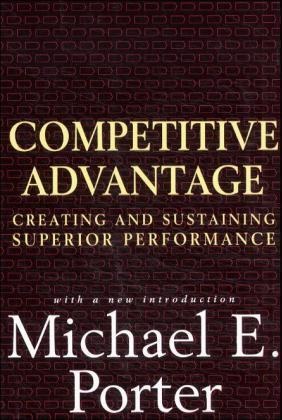Ulteriori informazioni
Zusatztext Antitrust Law & Economics Review A superb guide for business managers but also necessary background study for judges! antitrust agency officials! and economic experts in antitrust cases. Informationen zum Autor Michael E. Porter is the C. Roland Christensen Professor of Business Administration at the Harvard Business School. The author of fourteen books and recipient of the Wells Prize in Economics, he lives in Brookline, Massachusetts. Klappentext "Competitive Advantage" extends Porter's proven analytical techniques to the discreet activities of the individual firm, showing how to evaluate and improve a company's competitive position. Chapter 1: Competitive Strategy: The Core Concepts Competition is at the core of the success or failure of firms. Competition determines the appropriateness of a firm's activities that can contribute to its performance, such as innovations, a cohesive culture, or good implementation. Competitive strategy is the search for a favorable competitive position in an industry, the fundamental arena in which competition occurs. Competitive strategy aims to establish a profitable and sustainable position against the forces that determine industry competition. Two central questions underlie the choice of competitive strategy. The first is the attractiveness of industries for long-term profitability and the factors that determine it. Not all industries offer equal opportunities for sustained profitability, and the inherent profitability of its industry is one essential ingredient in determining the profitability of a firm. The second central question in competitive strategy is the determinants of relative competitive position within an industry. In most industries, some firms are much more profitable than others, regardless of what the average profitability of the industry may be. Neither question is sufficient by itself to guide the choice of competitive strategy. A firm in a very attractive industry may still not earn attractive profits if it has chosen a poor competitive position. Conversely, a firm in an excellent competitive position may be in such a poor industry that it is not very profitable, and further efforts to enhance its position will be of little benefit. Both questions are dynamic; industry attractiveness and competitive position change. Industries become more or less attractive over time, and competitive position reflects an unending battle among competitors. Even long periods of stability can be abruptly ended by competitive moves. Both industry attractiveness and competitive position can be shaped by a firm, and this is what makes the choice of competitive strategy both challenging and exciting. While industry attractiveness is partly a reflection of factors over which a firm has little influence, competitive strategy has considerable power to make an industry more or less attractive. At the same time, a firm can clearly improve or erode its position within an industry through its choice of strategy. Competitive strategy, then, not only responds to the environment but also attempts to shape that environment in a firm's favor. These two central questions in competitive strategy have been at the core of my research. My book Competitive Strategy: Techniques for Analyzing Industries and Competitors presents an analytical framework for understanding industries and competitors, and formulating an overall competitive strategy. It describes the five competitive forces that determine the attractiveness of an industry and their underlying causes, as well as how these forces change over time and can be influenced through strategy. It identifies three broad generic strategies for achieving competitive advantage. It also shows how to analyze competitors and to predict and influence their behavior, and how to map competitors into strategic groups and assess the most attractive positions in an indus...

